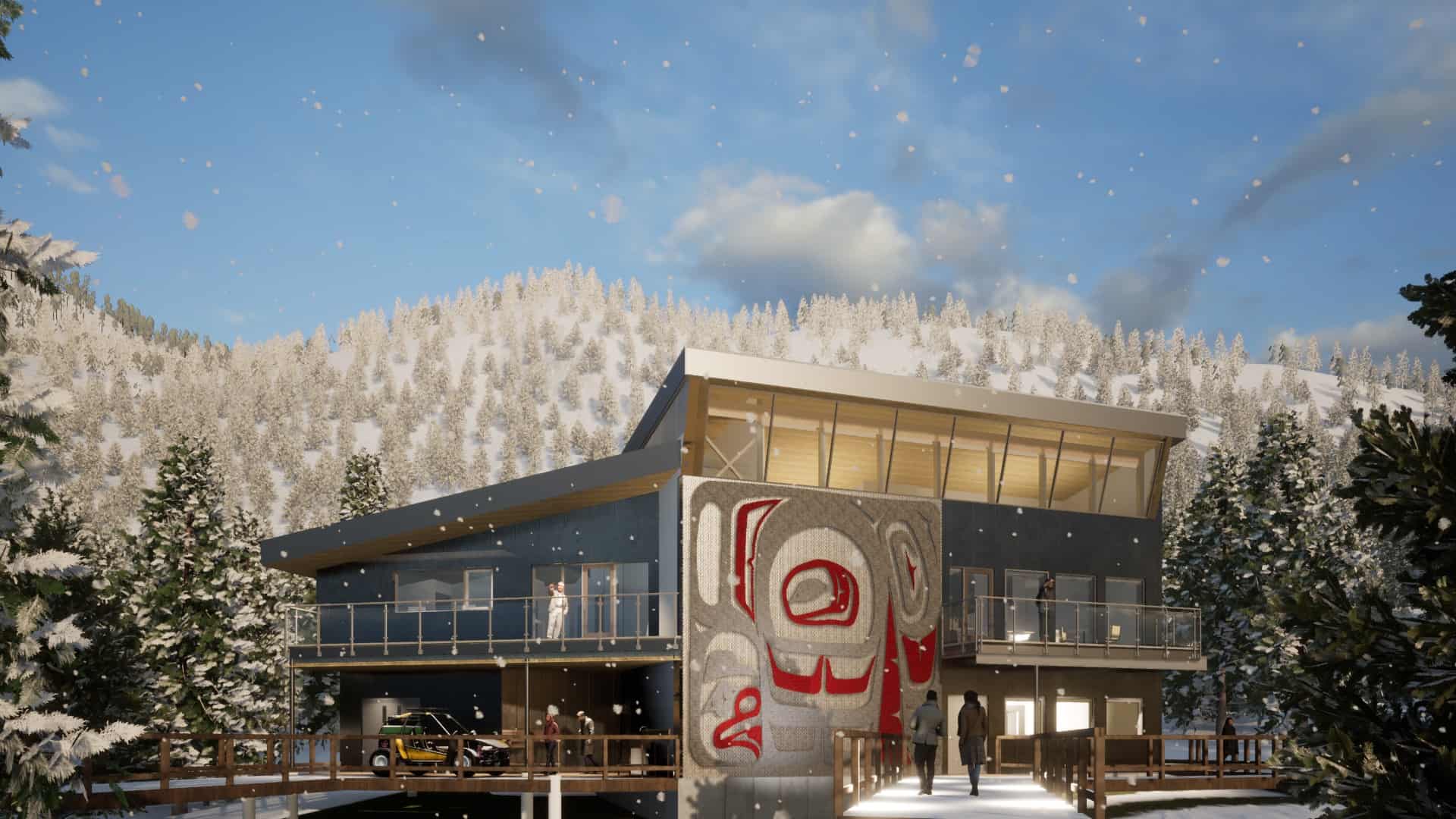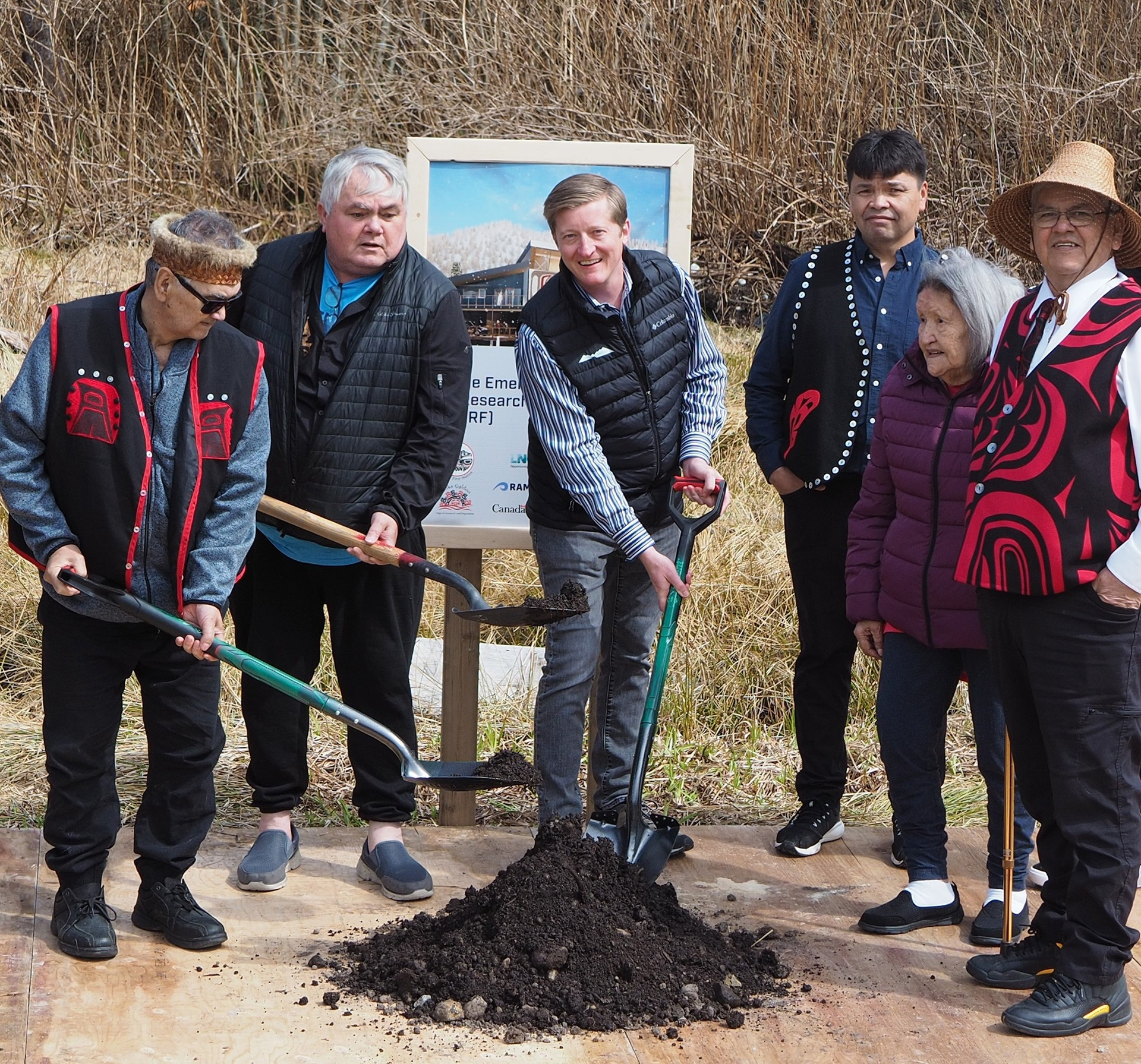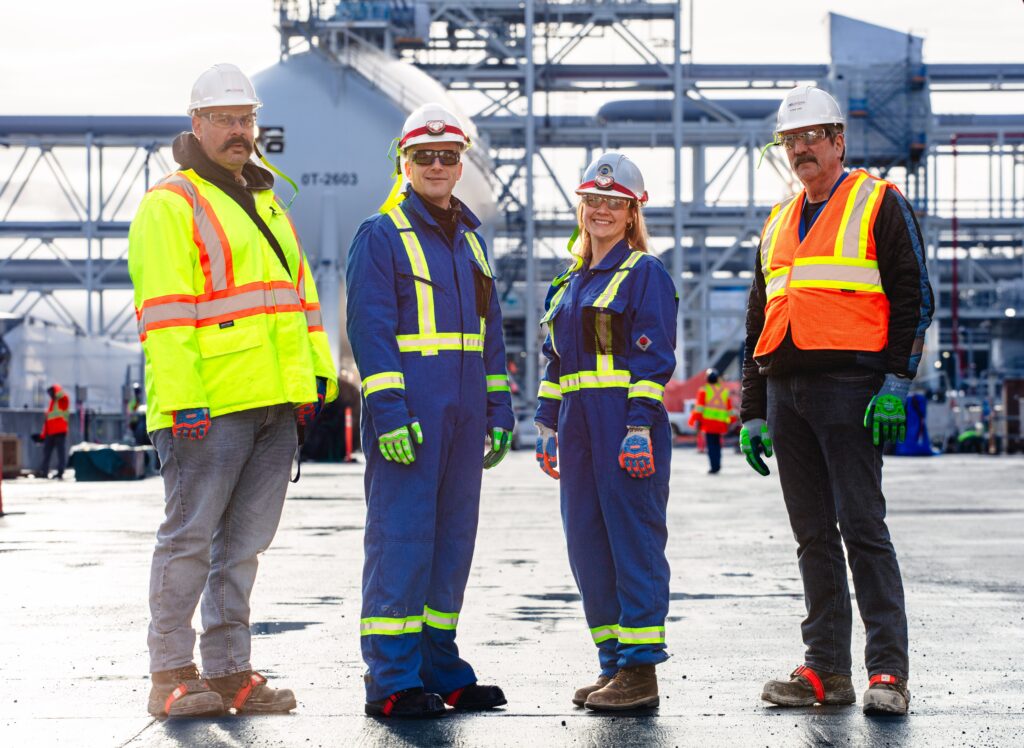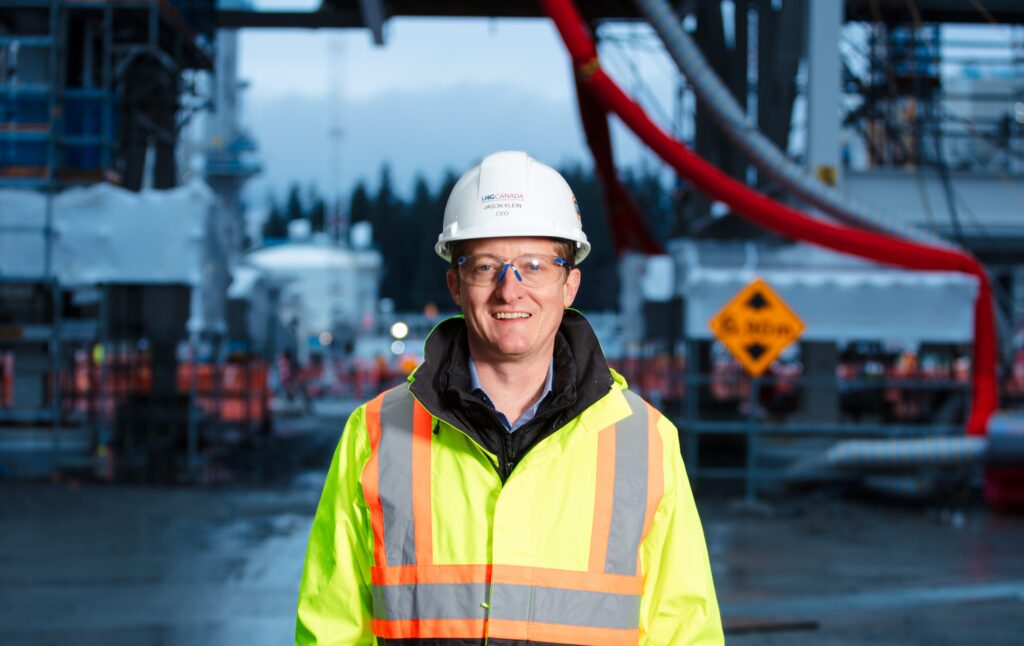May 17, 2023
Gitga’at First Nation and LNG Canada Break Ground on Marine Emergency Response and Research Facility
Share

Hartley Bay is a small, tightly-knit community on British Columbia’s north coast, near the mouth of Douglas Channel. Home to the Gitga’at First Nation, it’s a centre of activity in Gitga’at Territory.
Accessible only by boat or seaplane, Hartley Bay, also known as Txalgiuw, is often described as isolated and remote. All of its dwellings and community buildings, including an impressive school, are connected by wooden boardwalks, rather than paved or graveled roads. People move about in all-terrain vehicles instead of cars and trucks. It’s a beautiful, special place, with a host of spiritual and archeological sites that connect its people to a strong cultural heritage.
Hartley Bay came to international attention in March 2006, when a BC Ferries passenger vessel named the Queen of the North sank nearby.
It was just after midnight; alerted to the incident, Gitga’at members took to the water in small fishing boats and rescued dozens of ferry passengers adrift in life rafts, floating in almost total darkness. Tragically, two passengers were never found.
The nation’s community centre was temporarily transformed into a rescue centre, where survivors were welcomed with warm blankets, food, and kindness. For their acts of courage and compassion, Hartley Bay residents were presented with the Governor General’s Commendation for Outstanding Service, which honours the exceptional contribution of individuals or groups to their community.
“The villagers of Hartley Bay demonstrated initiative, selflessness and an extraordinary commitment to the well-being of others, for which they can be very proud,” the commendation read in part. “The entire community, from children to elders, is to be commended for its tremendous spirit and the remarkable example it has set.”
Memories of those events remain strong in Hartley Bay. Meanwhile, another legacy connected to the Queen of the North rescue is taking shape in the townsite: a new Marine Emergency Response and Research Facility (MERRF), which will serve as a base for Gitga’at-led marine activities, including rescue operations, training, and environmental research.
With significant funding from LNG Canada, which is building its liquified natural gas export facility nearby in Kitimat, in the traditional territory of the Haisla Nation, the MERRF will also house and display a collection of local artifacts and cultural objects, many of them repatriated from distant locations. A prominent exterior wall adjacent to the building’s main entrance will feature work by Gitga’at artist Stan Robinson.
After years of planning and design execution, a formal ground-breaking ceremony was held recently in Hartley Bay, attended by Gitga’at chiefs and councillors, elders and community members, LNG Canada representatives, and the MERRF’s architect and her team. With construction to begin soon, the facility is expected to open in approximately 18 months.
The MERRF is “highly significant for us, in different ways,” said Gitga’at councillor and school principal Cameron Hill. “We see it as a response to the Queen of the North and to the need for this type of facility. It also represents our relationship with LNG Canada. Their export terminal will require large LNG carriers to travel literally right past our front doors. The MERRF will allow us to closely monitor that traffic, along with other vessel movements, and gives us a really solid staging area to look after the water and the land.”
The MERRF’s architect, Vancouver-based Nancy Mackin, said its design is inspired by traditional Indigenous imagery and artwork, expressed in objects such as bentwood boxes. Along with its practical applications, the building represents “a symbol of reconciliation and repatriation, which makes it very special. This is one of the most unique projects I’ve worked on, and one of my favourites.”
LNG Canada CEO Jason Klein said the formal groundbreaking was a significant milestone for the new facility, and a demonstration of LNG Canada’s strong commitment to the Gitga’at First Nation, its members, the local ecosystem and safety. “We’re honoured to be welcomed to Gitga’at Territory,” he said, “and we’re grateful for the opportunity to contribute to a facility that will be a centre of excellence for Gitga’at-led emergency response operations, scientific research, education and cultural preservation, for many years to come.”



